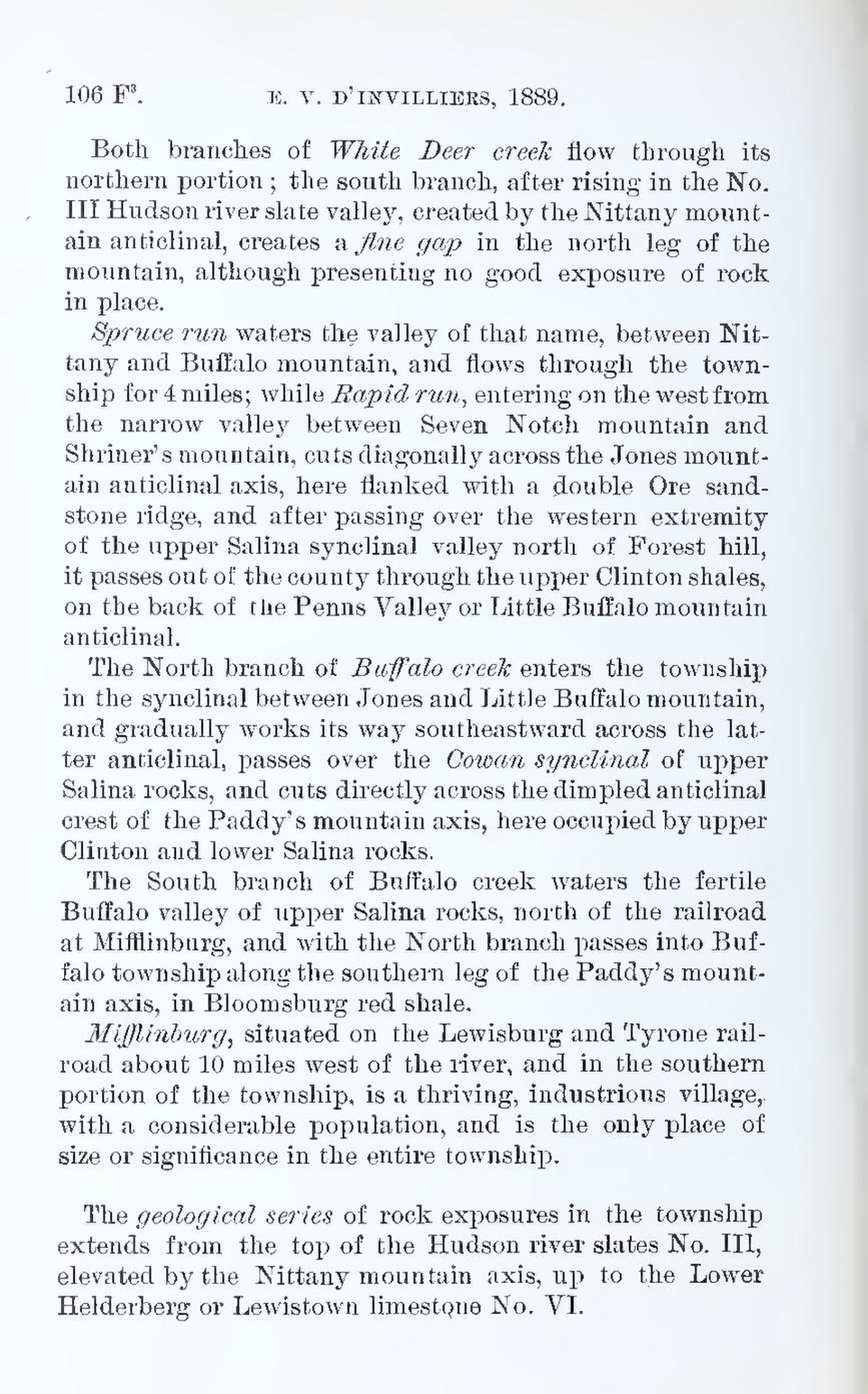Both branches of White Deer creek flow through its northern portion; the south branch, after rising in the No. III Hudson river slate valley, created by the Nittany mountain anticlinal, creates a fine gap in the north leg of the mountain, although presenting no good exposure of rock in place.
Spruce run waters the valley of that name, between Nittany and Buffalo mountain, and flows through the township for 4 miles; while Rapid run, entering on the west from the narrow valley between Seven Notch mountain and Shriner’s mountain, cuts diagonally across the Jones mountain anticlinal axis, here flanked with a double Ore sandstone ridge, and after passing over the western extremity of the upper Salina synclinal valley north of Forest hill, it passes out of the county through the upper Clinton shales, on the back of the Penns Valley or Little Buffalo mountain anticlinal.
The North branch of Buffalo creek enters the township in the synclinal between Jones and Little Buffalo mountain, and gradually works its way southeastward across the latter anticlinal, passes over the Cowan synclinal of upper Salina rocks, and cuts directly across the dimpled anticlinal crest of the Paddy’s mountain axis, here occupied by upper Clinton and lower Salina rocks.
The South branch of Buffalo creek waters the fertile Buffalo valley of upper Salina rocks, north of the railroad at Mifflinburg, and with the North branch passes into Buffalo township along the southern leg of the Paddy’s mountain axis, in Bloomsburg red shale.
Mifflinburg, situated on the Lewisburg and Tyrone railroad about 10 miles west of the river, and in the southern portion of the township, is a thriving, industrious village, with a considerable population, and is the only place of size or significance in the entire township.
The geological series of rock exposures in the township extends from the top of the Hudson river slates No. III, elevated by the Nittany mountain axis, up to the Lower Helderberg or Lewistown limestone No. VI.
